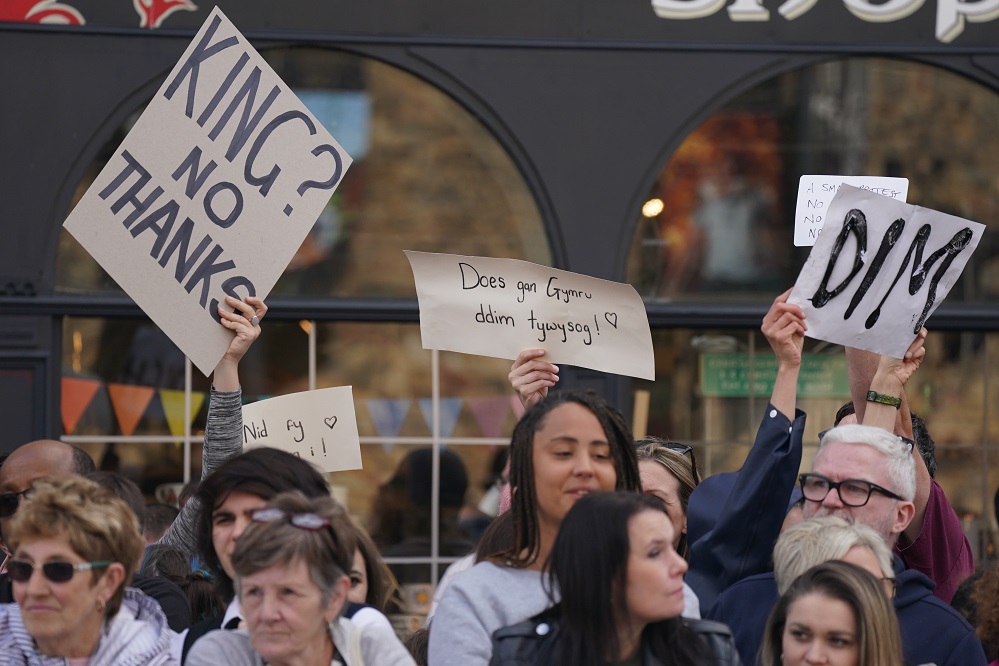This walking life: Canton to Adamsdown – Monday 19th September

David Llewellyn
I had a walk planned for the 19th. I was going to catch a train up to Tir-phil station and walk down the valley to the Winding House mining museum in New Tredegar.
The occasion was what would have been the composer Johann Johannsson’s 53rd birthday.
I chose that location as it’s where photographer and artist Jon Pountney and I watched the film The Miner’s Hymns, for which Johannsson wrote the score, in 2013.
It wasn’t until years later, after hearing his music for the film Arrival that I began digging a little deeper into his back catalogue.
Then came the news that my friend Marc Rees was working with him on a project titled Now the Hero, an immersive theatre piece made to mark the forthcoming 100th anniversary of the armistice that brought about the end of the First World War.
Sadly, Johannsson wasn’t to see this, and several other projects, including his film The Last and First men completed.
He died suddenly on February 9th of that year, and having some connection with him – albeit by one degree of separation – his death hit hard.
We had lost one of the great contemporary composers all too soon. The often melancholic quality of his music made that loss all the more poignant.
Pilgrimage
My plans for a pilgrimage to Tir-phil were changed by the unstoppable forces of history, Johannsson’s birthday coinciding with the funeral of Queen Elizabeth II.
Whatever my views on the monarchy, it was something I knew I had to watch. My mother instilled in me the need to see these events, from the release of Nelson Mandela to the funeral of Princess Diana.
To balance out the day I’d also booked tickets for See How They Run at Chapter Arts, one of the few places where it would be business as usual.
The funeral was moving, as I knew it would be.
Away from the tawdry spectacle of third-rate TV presenters laying flowers and people camping on the streets of London to see a coffin, it was a family funeral, familiar despite the grand setting and status of those attending.
The music choices were good, with settings by Judith Weir and Hubert Parry, and The Lord is My Shepherd brought tears, as it always does, being one of the hymns sung at my mother’s funeral in 2003.
Soaring voices
In the hours before the broadcast, I worked on a novel that’s been keeping me busy in recent weeks, a Gothic thriller set at a girls’ arts school in 1940s Carmarthen.
While doing this I listened to Johannsson’s Englabörn and Orphée, tonally appropriate for both the day and the book I’m working on.
I caught a bus to Canton to watch the film, which I enjoyed, but decided to walk home.
For this journey I listened to Drone Mass, one of several works recorded and released in the year’s following Johannsson’s death.
It’s an extraordinary piece, with soaring voices and instrumentation, one that brings to mind much of his earlier work, including the Arrival soundtrack.
It made my walk home a contemplative one.
Though it began as a bright and sunny day, it was beginning to cloud over.
Spic and span
When you walk across Cardiff, it’s not the tourist spots and shops you notice, all of which were shut, but the places that are run down, boarded up.
As I approached the town bridge a man walking in front of me bent down to pick up a half-smoked cigarette from the pavement, leaning against the balustrade to smoke it and looking out over the Taff, his girlfriend standing by his side.
On Queen Street there were a few people begging and abandoned sleeping bags and blankets in the doorways of empty shops.
It’s only days since our new King was in town, an event for which the street cleaners were out in force, making the city look spic and span ready for his arrival, though in the event the crowds booed his motorcade as it passed through the Castle’s ancient gatehouse.

Ill-fated
No sooner had Prince Charles become King Charles III than he appointed his son the Prince of Wales, continuing a tradition begun by Edward I when he gave the title to his own ill-fated firstborn, but it got me wondering; of which Wales is William the Prince?
Is it the Wales where people sleep rough in doorways, and where working-class people of every race, colour and creed are struggling to get by?
Is it the Wales where no trip to Tesco is complete without someone asking me to buy them food or just a bottle of coke?
Is it the Wales where, when his father held the title, I was a free school dinners kid, whose mum queued for tins of EU surplus, or is it the Wales of second homes, luxury golf resorts and Porsches in what were once fishing villages, in a country ignored by his flag?
Support our Nation today
For the price of a cup of coffee a month you can help us create an independent, not-for-profit, national news service for the people of Wales, by the people of Wales.




